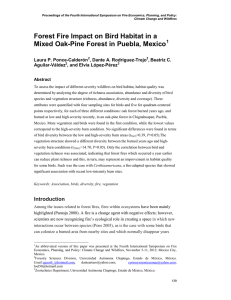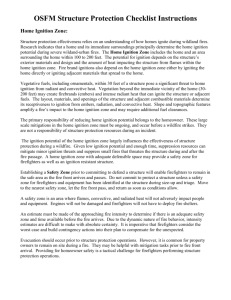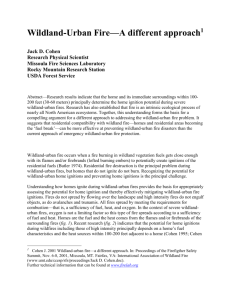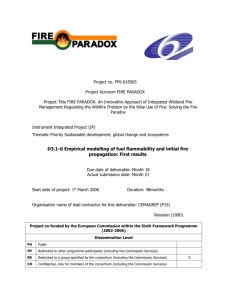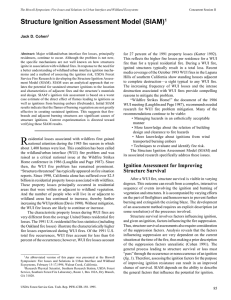Fire in a Changing Climate: Stochastic versus
advertisement
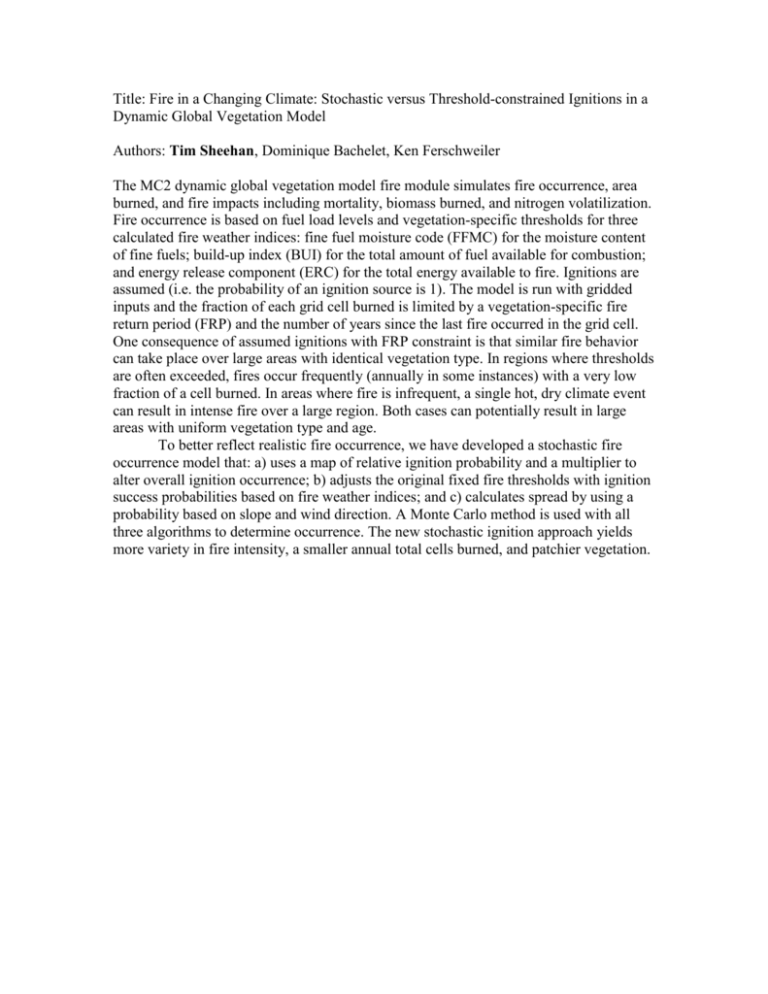
Title: Fire in a Changing Climate: Stochastic versus Threshold-constrained Ignitions in a Dynamic Global Vegetation Model Authors: Tim Sheehan, Dominique Bachelet, Ken Ferschweiler The MC2 dynamic global vegetation model fire module simulates fire occurrence, area burned, and fire impacts including mortality, biomass burned, and nitrogen volatilization. Fire occurrence is based on fuel load levels and vegetation-specific thresholds for three calculated fire weather indices: fine fuel moisture code (FFMC) for the moisture content of fine fuels; build-up index (BUI) for the total amount of fuel available for combustion; and energy release component (ERC) for the total energy available to fire. Ignitions are assumed (i.e. the probability of an ignition source is 1). The model is run with gridded inputs and the fraction of each grid cell burned is limited by a vegetation-specific fire return period (FRP) and the number of years since the last fire occurred in the grid cell. One consequence of assumed ignitions with FRP constraint is that similar fire behavior can take place over large areas with identical vegetation type. In regions where thresholds are often exceeded, fires occur frequently (annually in some instances) with a very low fraction of a cell burned. In areas where fire is infrequent, a single hot, dry climate event can result in intense fire over a large region. Both cases can potentially result in large areas with uniform vegetation type and age. To better reflect realistic fire occurrence, we have developed a stochastic fire occurrence model that: a) uses a map of relative ignition probability and a multiplier to alter overall ignition occurrence; b) adjusts the original fixed fire thresholds with ignition success probabilities based on fire weather indices; and c) calculates spread by using a probability based on slope and wind direction. A Monte Carlo method is used with all three algorithms to determine occurrence. The new stochastic ignition approach yields more variety in fire intensity, a smaller annual total cells burned, and patchier vegetation.


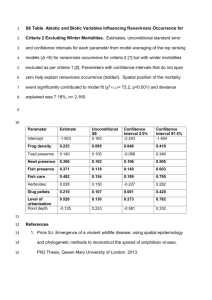




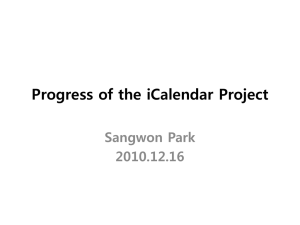



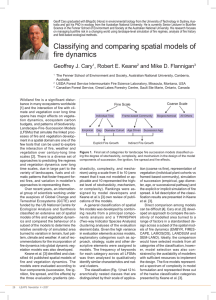
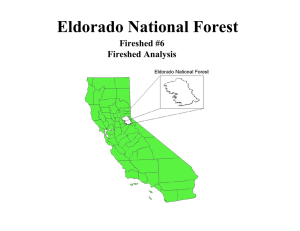
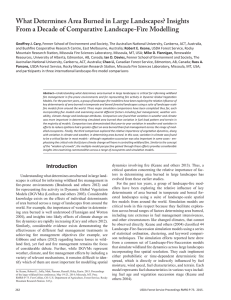
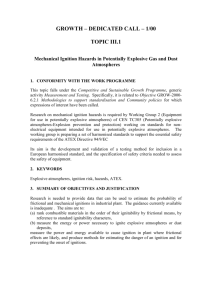
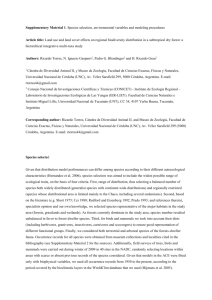
![tp900.101 [test procedure] - Department of Planning, Transport and](http://s3.studylib.net/store/data/007247620_1-a44905347a7cb6aa1a5a6b932dae868a-300x300.png)
